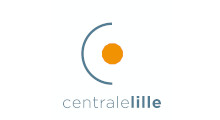An environmental journey
I remember watching Al Gore’s An inconvenient truth in 2007 and feeling relieved there were adults in the room with a plan to tackle climate change.
Life went on and I tried to be a good Earth citizen. I ate locally produced food as much as possible. I biked to work, didn’t own a car and took the train to visit my friends on the weekends. I did my best to be zero waste, had my own composting worms, bought as much second hand as possible and significantly reduced my meat consumption. Even doing all that, I was still a victim of my own cognitive dissonance (for example, I flew a couple of times a year). I was simply turning a blind eye to a reality that is hard to accept.
Over the past few months, I became more able to stare at the environmental issues we are facing in the eyes. I watched Jean-Marc Jancovici’s lectures at Mines Paris (maybe the most prestigious engineering school in France) and read Pablo Servigne’s work (mostly in French, sorry!).
As an engineer, you want to be able to coldly look at the numbers and think of solutions within a given set of constraints. Diving into these works helped me somewhat get rid of the overwhelming emotions one can feel when thinking our children and grandchildren won’t be able to live on a properly inhabitable planet like we have been. I guess doctors have a lot to teach us in this area, because although they obviously sympathise with their patients, they have to set aside their emotions to focus on what needs to be done for them.
This is hard to explain, but it’s different to know the facts and really process them. I had known the facts for years but was not shaken off like I was right after seeing the numbers crunched.
That’s why I’m happy to now be part of a team working on solutions to tackle green-house gases emissions. Everything should be done to stop using coal and gas for electricity production. There are low-carbon solutions that can be deployed at scale, and to deploy them, the faster the better…


